Abstract
Five gas chromatographic liquid phases (25% Carbowax 20 M plus 4% H3PO4, 17.5% dioctyl sebacate plus 7.5% sebacic acid, 17.5% dioctyl sebacate plus 7.5% docosanoic acid, 5% Tween 80, and 20% LAC-296 [poly (diethylene glycol adipate)] plus 2% H3PO4) were studied with respect to their utility in the separation and quantitation of steam-volatile organic acids commonly produced in fermentation. Optimal operating conditions and column stability for routine analysis were established. An Aerograph Hy-Fi gas chromatograph was used for all work, except the studies with Tween 80 in which an Aerograph A-90-C was employed. Chromatographic traces are presented of volatile fatty acid analyses with each of the liquid phases. Complete separation of all isomers of the fatty acids from C2 to C5 was accomplished by the Carbowax 20 M plus H3PO4, dioctyl sebacate plus sebacic acid, and dioctyl sebacate plus docosanoic acid columns. The latter two liquid phases were extremely unstable and proved to be unsatisfactory for analysis of aqueous samples. A column of Carbowax 20 M + H3PO4 separated steam-volatile organic acids completely. The volatile fatty acid isomers were separated by 5% Tween 80 somewhat less completely, and the peak shapes were not as sharp and symmetrical as that desired for good quantitative work. LAC-296 (20%) plus 2% H3PO4 proved to be the most satisfactory of the liquid phases for routine analysis of deproteinated in vitro rumen fermentation media. The column has been used for routine analysis of rumen fermentation fluid and in vitro rumen incubation fluid. All the organic acids from C2 to C5, except isobutyric, could be quantitated with this column. Stability of the column with the aqueous solutions was extremely good. The standard deviation of the analysis of each volatile acid component in a fermentation fluid was less than 0.5 molar per cent. The short-chain organic acids (C2 to C5) were shown to be extremely stable in aqueous solution for as long as 6 months after preparation for gas chromatographic analysis by protein precipitation with metaphosphoric acid-H2SO4 and refrigeration at 4 C in stoppered tubes.
Full text
PDF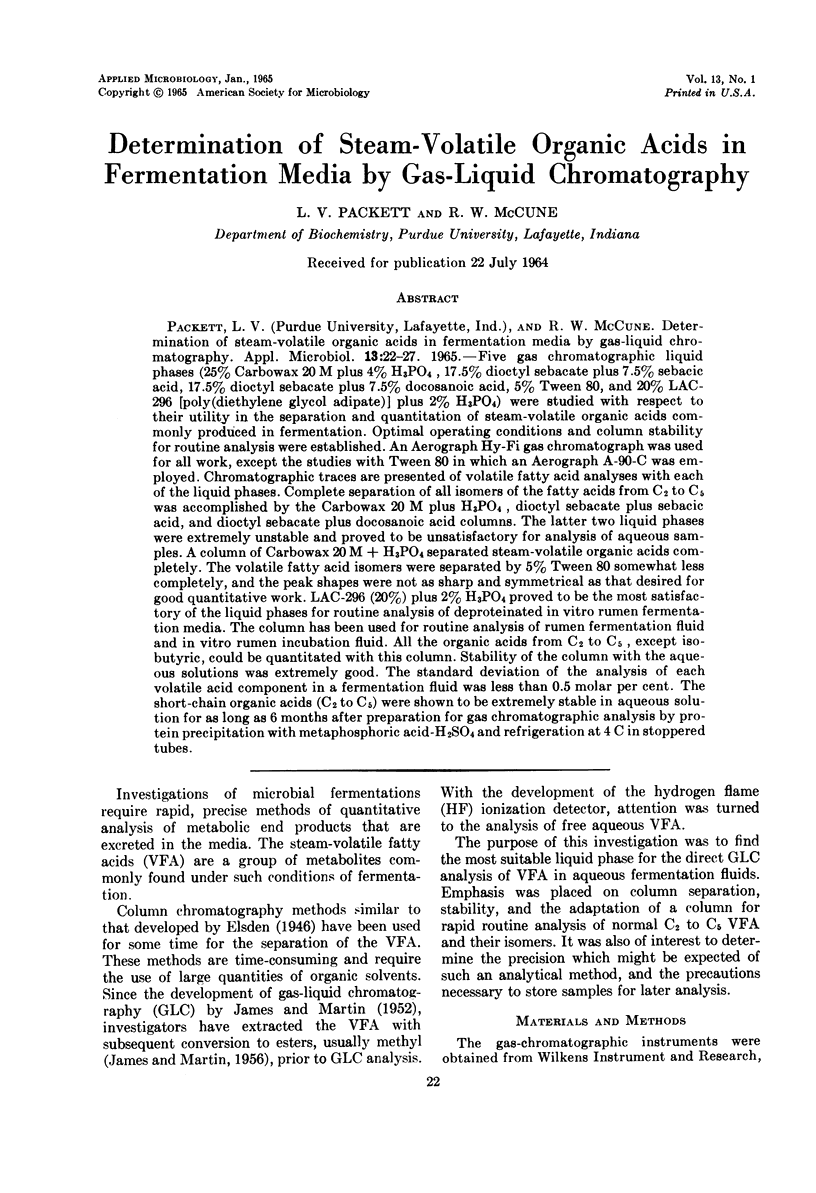
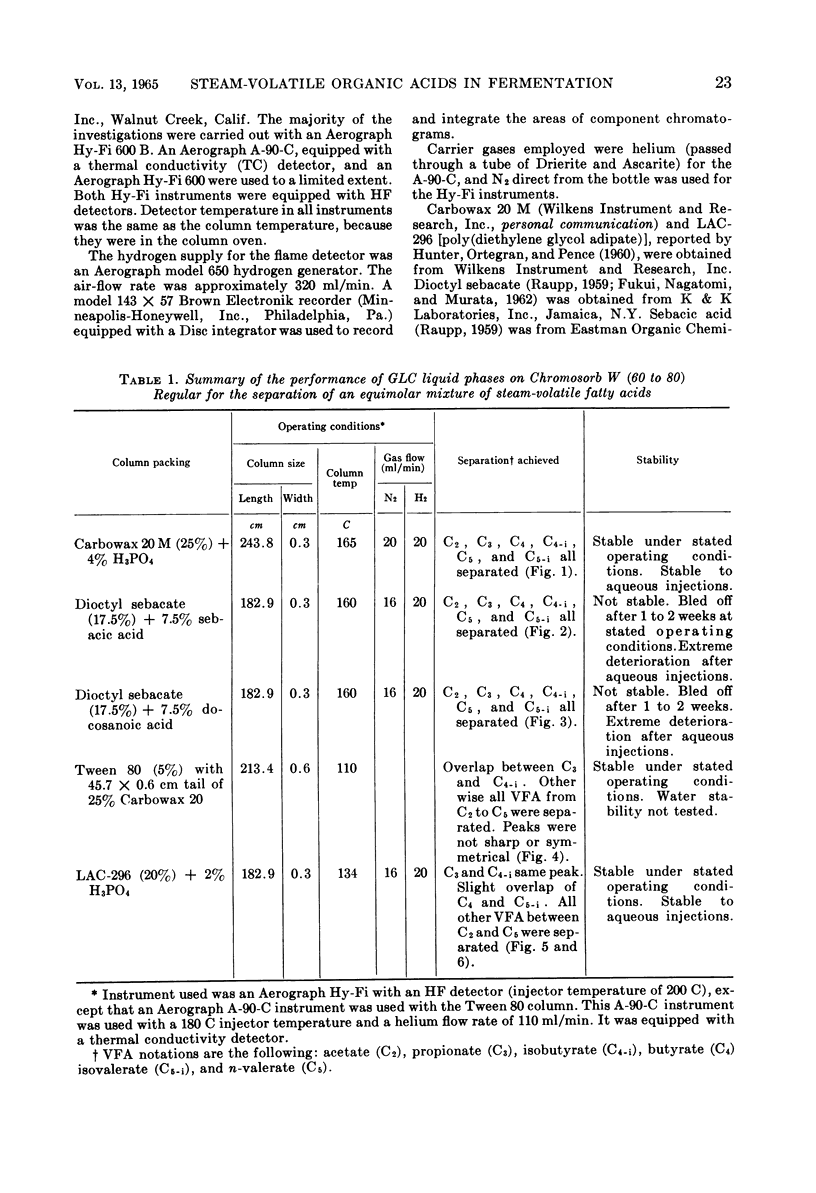
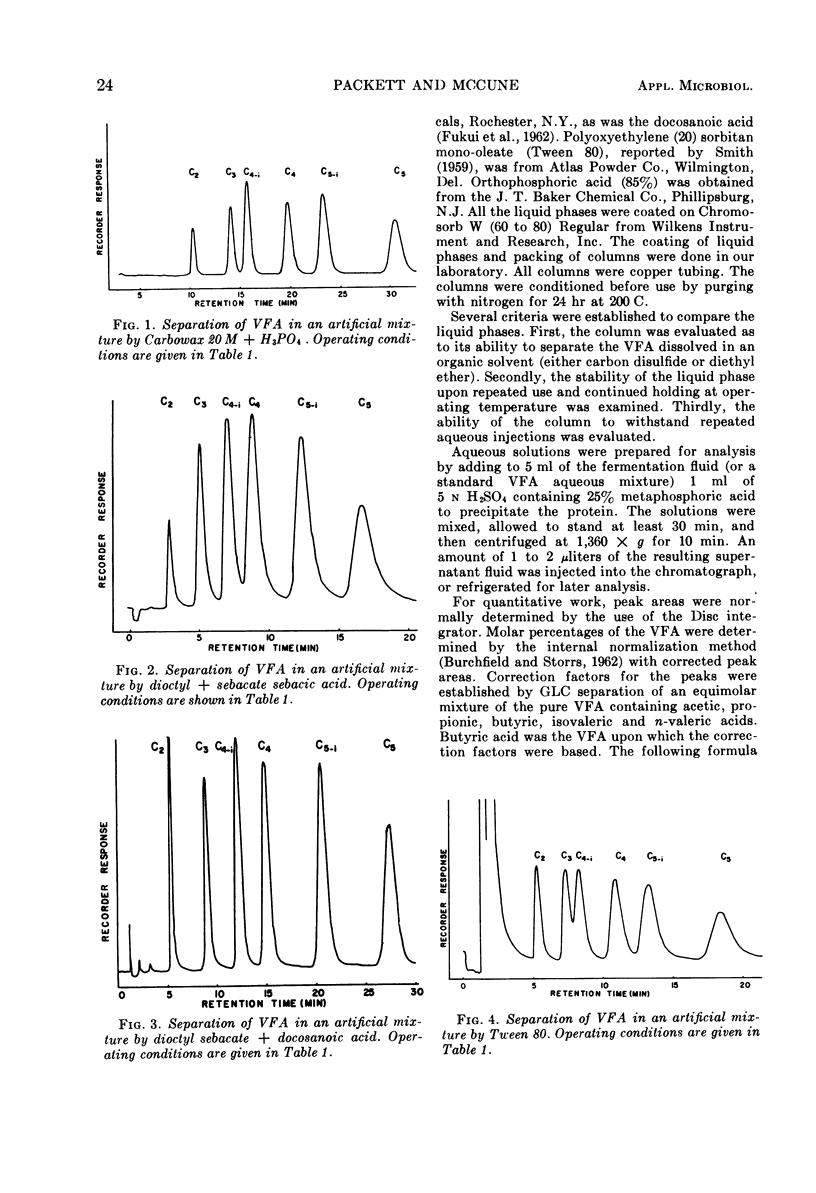
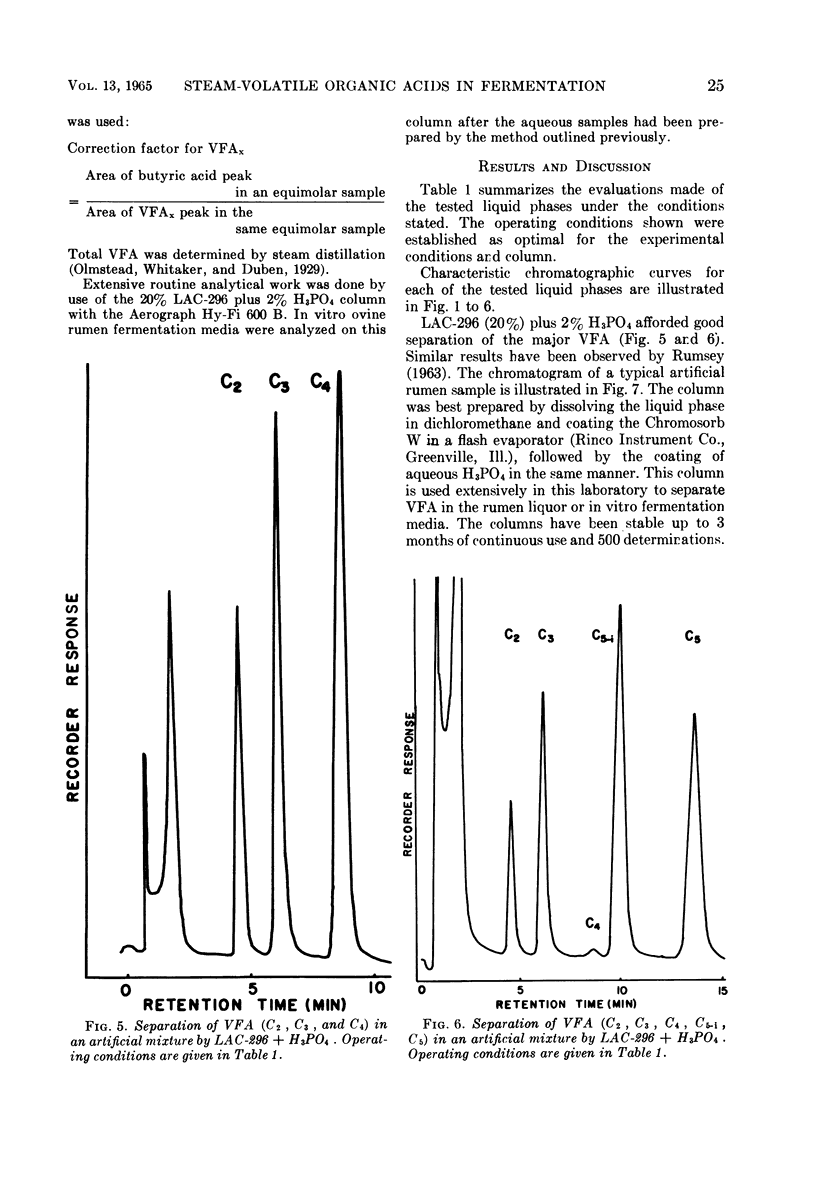
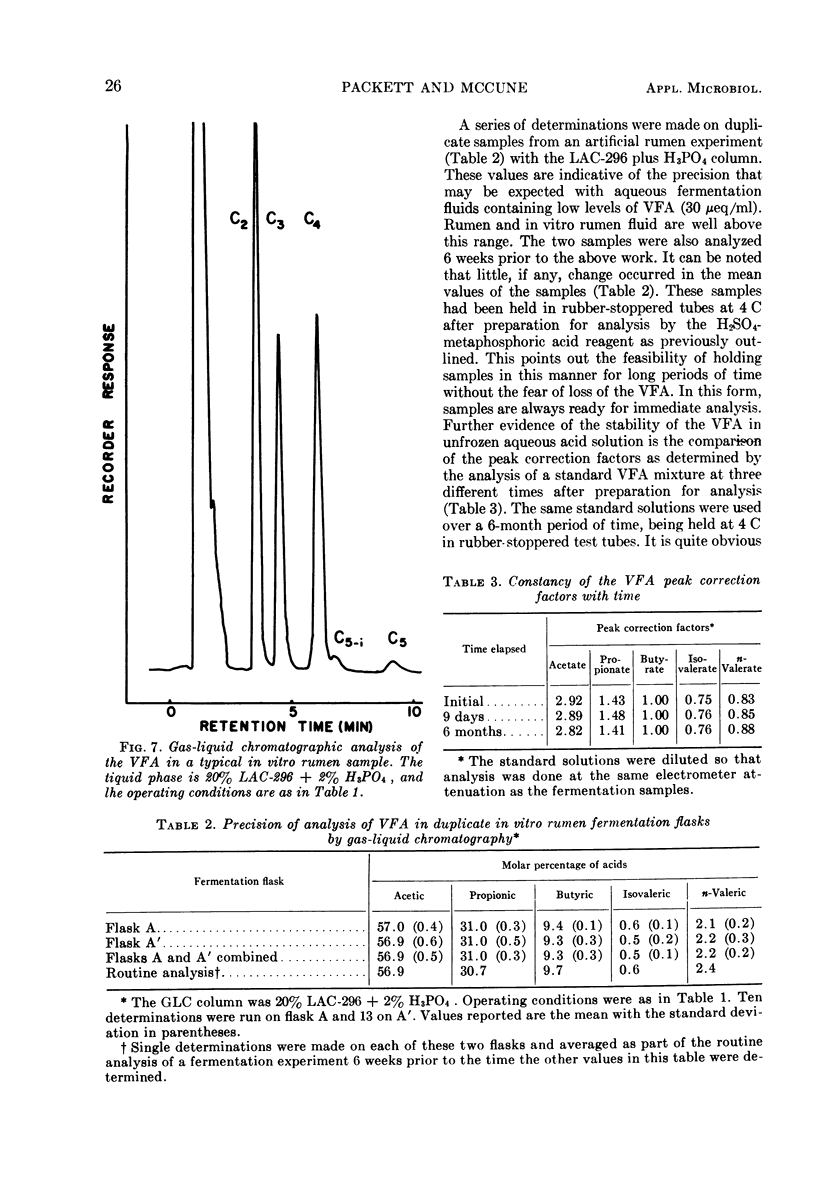
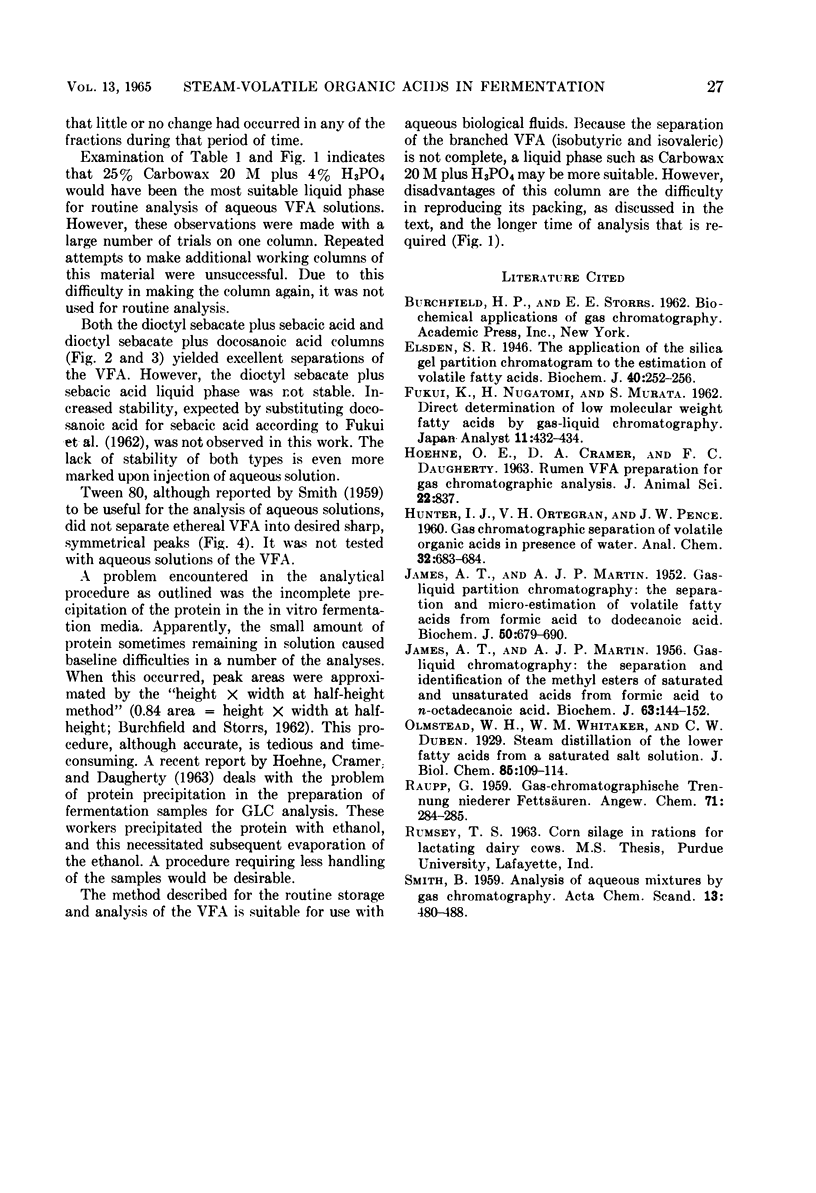
Selected References
These references are in PubMed. This may not be the complete list of references from this article.
- Elsden S. R. The application of the silica gel partition chromatogram to the estimation of volatile fatty acids. Biochem J. 1946;40(2):252–256. doi: 10.1042/bj0400252. [DOI] [PMC free article] [PubMed] [Google Scholar]
- JAMES A. T., MARTIN A. J. P. Gas-liquid partition chromatography; the separation and micro-estimation of volatile fatty acids from formic acid to dodecanoic acid. Biochem J. 1952 Mar;50(5):679–690. doi: 10.1042/bj0500679. [DOI] [PMC free article] [PubMed] [Google Scholar]
- JAMES A. T., MARTIN A. J. Gas-liquid chromatography: the separation and identification of the methyl esters of saturated and unsaturated acids from formic acid to n-octadecanoic acid. Biochem J. 1956 May;63(1):144–152. doi: 10.1042/bj0630144. [DOI] [PMC free article] [PubMed] [Google Scholar]


